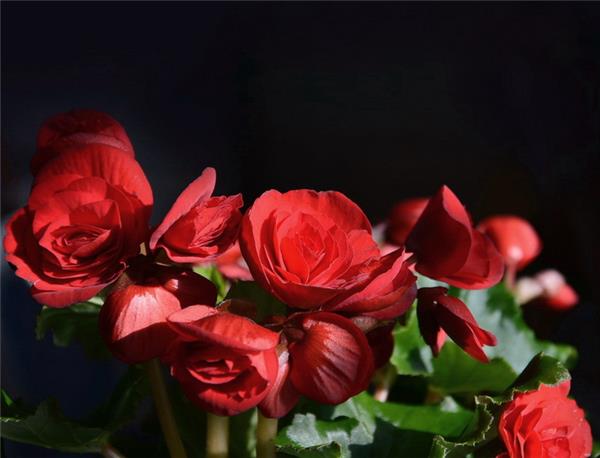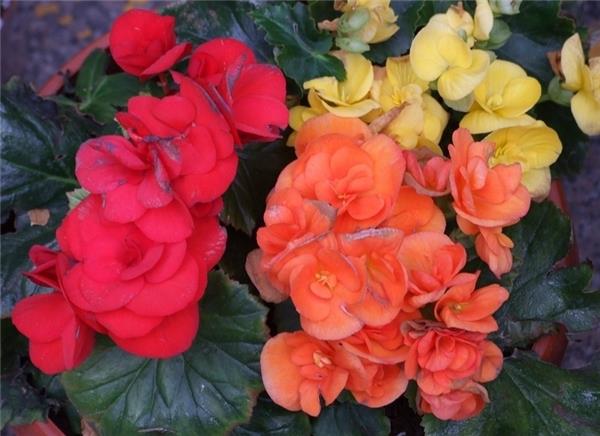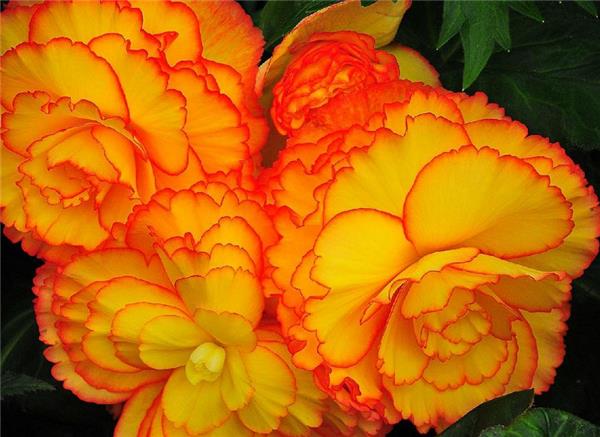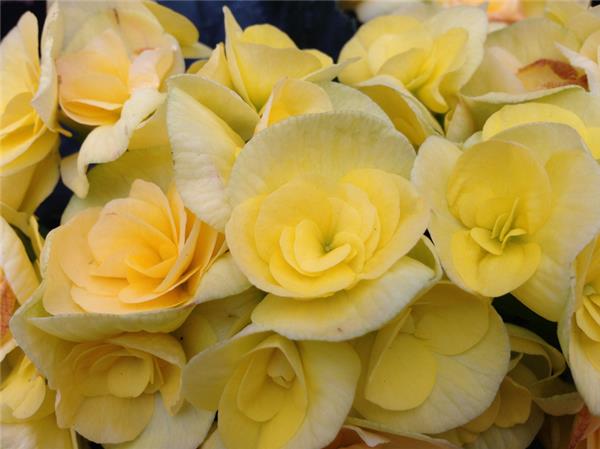How to propagate Rieger Begonia Reproduction methods of Rieger Begonia
In late autumn and early winter, when trimming Rieger Begonia, the new branches can be used as cuttings. Do you know how Rieger Begonia breeds? Next, I would like to introduce the breeding method of Rieger Begonia.

How does Rieger Begonia reproduce
The propagation of Rieger Begonia is mainly divided into three methods: sowing, cutting and tissue culture. In late autumn and early winter, when trimming Rieger Begonia, the cut new branches can be used as cuttings.
1. The insertion method of Rieger Begonia
Rieger begonia can be cut not only in branches but also in leaves. When the branch is inserted, the length of the branch should be moderate, and the lower part of the branch should be cut into horseshoe shape with a blade. When inserting the leaves of Rieger Begonia, six mature leaves with vigorous growth should be selected and the lower end of the petiole should be obliquely cut with a blade.
The matrix of Rieger Begonia is vermiculite powder or plain sand, and the contaminated matrix should be disinfected and reused. Water should be thoroughly watered after inserting the cuttings, but there should be no stagnant water on the leaves. And cover it with plastic film and put it in the place of scattered light, properly ventilated to avoid high temperature. The cuttings can take root in about 3 weeks.
When the branches of Rieger Begonia grow new leaves, it shows that they have taken root. Rieger Begonia obtained by branch cutting method has no underground tubers. After 3 weeks of leaf insertion, fibrous roots can also grow in the lower part of the petiole, but it will take another month and a half to grow adventitious buds from the petiole and gradually unearthed.

2. Sowing method
Because the seeds of Rieger Begonia are very small, the small seed sowing method must be used. At present, the seeds of Rieger Begonia are basically imported, including sub-coated and uncoated seeds. It is best to mail-order the original packaged and undamaged seeds from large flower and tree companies, so as to ensure that they can germinate into seedlings, and it is difficult for seeds in bulk to germinate.
Sowing container: Rieger begonia coated seeds can be sorted, can be used hole seedling plate, non-coated seeds can only use seedling tray. The sowing medium is peat soil and vermiculite powder, crushed and sterilized, then mixed and stirred, ready for use in a semi-wet state.
Because peat soil is water repellent in dry state and cannot be watered, it can not be used in dry state. When sowing, first put the substrate on the nursery plate, and then pour water through the spray pot. The coated seeds can be sorted with tweezers, one for each hole, and the uncoated seeds can be mixed with appropriate amount of fine vermiculite powder and sowed in the seedling plate.

Rieger crabapple does not need to be covered with soil after sowing, only spray with a fine spray can, and then wrap the seedling tray with transparent plastic film. Under the condition of ambient temperature of about 20 ℃, seedlings began to emerge in about 12 days. When Rieger Begonia seedlings grow true leaves, they can be properly ventilated to promote their roots.
Rieger begonia grows slowly in three months. The seedlings sown in early summer do not have to remove the plastic film throughout the summer, and the seedlings are resistant to high humidity and high temperature. When the weather is cool after autumn, you can gradually peel off the plastic film and put it on the pot in early winter.
The upper pot can use a smaller flowerpot with porous bottom, and the culture soil can be mixed with 2 parts of peat soil and 1 part of vermiculite powder (or 1 part of plain sand). Watering is controlled before the pot, so that the culture soil in the seedling tray is in a semi-dry state. in this way, the roots can not be hurt when the seedlings are raised.
Rieger Begonia seedlings just on the pot to prevent the weather change temperature is too high, at the same time to use plastic film cover, but not too tight, should be properly ventilated to prevent rotten seedlings. Under family conditions, Rieger crabapple can not grow into a large plant in the first year, but flowers can be seen in the first year. It can only be cultivated into a large plant in the second year, and a larger flowerpot can be changed in the second year.

3. Tissue culture
This is an effective way to quickly obtain a large number of flower seedlings of Rieger Begonia, and it can also be successful under family conditions. In the vigorous growing season of Rieger Begonia, a large number of virus-free seedlings can be obtained by non-toxic explant culture, subculture and rooting culture in a certain medium with well-developed leaves as explants. This method is expensive and can only be used in mass production.
Related
- Wuhan Hospital Iron Tree Blooming Result Was Instantly Frightened by the Gardener Master
- Which variety of camellia is the most fragrant and best? Which one do you like best?
- What is the small blue coat, the breeding methods and matters needing attention of the succulent plant
- Dormancy time and maintenance management of succulent plants during dormancy
- Minas succulent how to raise, Minas succulent plant pictures
- What are the varieties of winter succulent plants
- How to raise succulent plants in twelve rolls? let's take a look at some experience of breeding twelve rolls.
- Attention should be paid to water control for succulent plants during dormant period (winter and summer)
- Watering experience of twelve rolls of succulent plants
- Techniques for fertilizing succulent plants. An article will let you know how to fertilize succulent plants.



